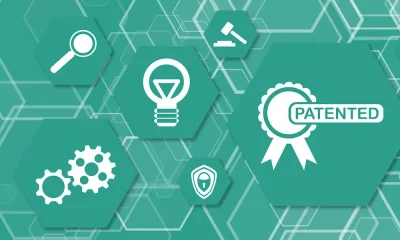Accounting & Finance
5 Tips For Preserving Cash Flow In Your Small Business

Cash flow is the lifeblood of any business, especially a small business that needs a steady stream of fresh cash to pay its suppliers, employees, and utilities.
The pandemic has created a situation of extreme distress for most small businesses in North America as lower foot traffic, a shift in consumer preferences towards online shopping. Higher unemployment levels have taken a toll on the demand for the goods and services they sell.
In fact, according to a survey from the National Academy of Sciences of the United States, the median small business had roughly 2 weeks of expenses worth in cash, which points to how fragile these companies are in such an uncertain environment.
5 Tips For Preserving Cash Flow
The following article, created by business consultant Jasdeep Singh aims to assist business owners in this matter by providing five strategies to improve their cash flow to increase the likelihood of surviving this temporary downturn, including:
- A tighter credit policy
- Work with the suppliers that give you the most favorable conditions
- Avoid discretionary expenses
- Analyze your inventory and push down long-held items
- Have one or two go-to lenders that you can access when reserves are drained
Tip #1: A tighter credit policy
A credit policy is a set of conditions that businesses establish for their credit sales, including the credit’s length, the penalties applicable to late payments, and the maximum amount of credit extended per customer, among other similar details.
In times of financial distress such as this, businesses should tighten their credit policy to favor responsible clients while also preventing clients that have not shown positive signs of creditworthiness from affecting the business’s cash cycle.
This can be achieved by limiting the amount of the credit limit extended to irresponsible clients, giving them the incentive to pay on time, or closing the credit account if the situation demands it.
That said, make sure your credit policies continue to be favorable enough to incentivize sales rather than discouraging clients from making large purchases due to their strictness.
Tip #2: Work with the suppliers that give you the most favorable conditions
Businesses should increase their reliance on suppliers that offer the most flexible credit conditions. However, their price may be slightly less favorable than those provided by a cash-only supplier or by vendors that provide tighter credit terms.
Although this could increase the price of the end product, at this point, the goal is not necessarily to turn a profit. Instead, businesses should focus on postponing obligations as much as possible to give sales enough time to recover.
Tip #3: Avoid discretionary expenses
Discretionary expenses are not essential for the business to function adequately.
These expenses are not necessarily just things the business doesn’t need, as they could also be hidden within the categories that seem “essential” but are actually inefficient.
Think of a marketing campaign that is not yielding positive results or an office space that is too expensive.
By streamlining these costs, companies can reduce their break-even point and, as a result, improve their cash flow.
Tip #4: Analyze your inventory and push down long-held items
Retail businesses should assess their inventory every week to identify items that are not being sold at the pace they should.
If you have an inventory turnover goal, you should quickly markdown and move along any products that fail to meet those standards as they represent a cash investment that can be otherwise used in something more profitable or necessary.
To achieve this, Dr. Singh, who is an MBA candidate from the University of Connecticut, recommends small businesses to have a robust inventory management system. If your business depends entirely on inventory, you should consider buying one of these systems, as they will become a great ally.
Tip #5: Have one or two go-to lenders that you can access when reserves are drained
Lenders are your allies as long as the terms of the credit lines they offer are affordable for your business.
There will probably be instances in which your cash flow will turn negative due to a client who is late on paying an invoice or due to a sudden expense.
Having a lender by your side to fulfill this short-term need will be an advantage. Still, you should make the repayment of that debt your top priority to avoid unnecessary interest expenses soon.
Bottom Line
Suppose your business is currently struggling with maintaining positive cash flow. In that case, these tips will help you reduce your overhead while optimizing your asset structure to improve your cash cycle.









